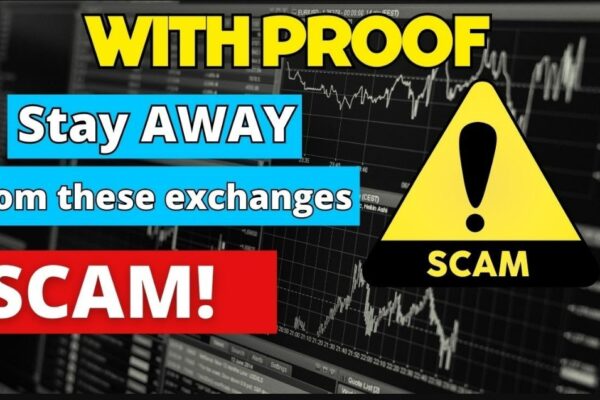CanadaBondExchange.com Review -An Unregistered Trading Activity
In the complex, fast-moving world of investment, the promise of secure, high-yield opportunities can be intoxicating. For the average retail investor, navigating the bond market—a segment often perceived as safe and stable—should offer a reassuring path to growth. However, a significant cautionary flag has been raised against an entity known as “Canada Bond Exchange,” operating under the digital banner of canadabondexchange.com.
This in-depth analysis moves beyond simple rumours to dissect the specific warnings issued by prominent Canadian financial regulatory bodies. It serves as a comprehensive guide for those researching the platform, illustrating the critical importance of due diligence and understanding the non-negotiable legal landscape governing securities trading in Canada. When a major provincial securities commission steps in to issue an investor alert, it is a development that demands the undivided attention of every potential investor. This is a story about the regulatory architecture designed to protect citizens and what happens when an operation appears to operate outside its foundational rules.
The Non-Negotiable Pillar of Registration
The core issue concerning the Canada Bond Exchange entity is a fundamental one: registration. In Canada, as in most highly regulated financial jurisdictions worldwide, any individual or company that engages in the business of trading securities—which include investment contracts, stocks, and bonds—must be formally registered with the relevant provincial or territorial securities commission. This registration is not a mere bureaucratic hurdle; it is the cornerstone of investor protection.
Registration means the firm and its representatives have met mandatory educational, ethical, and conduct standards. It means the company is subject to continuous oversight, audits, and compliance checks. Most importantly, it provides investors with a regulated channel to pursue complaints and gives regulators the authority to intervene if there is misconduct. The official warnings concerning the entity highlight that the Canada Bond Exchange, found at the designated website, is not registered in Ontario to engage in the business of trading in securities.
This is not a technicality. For an investment firm operating in the Canadian market, this lack of registration is the most critical red flag an investor can encounter. It places the firm—and, by extension, any money invested with it—entirely outside the jurisdiction and protective framework of the Canadian regulatory system. If an investor were to deposit funds and subsequently face a withdrawal issue, a dispute, or an outright loss, their usual and most effective recourse channels are instantly closed off. The provincial securities commission has no formal authority over an unregistered entity to force compliance or investigate with the full power of law.
Anatomy of an Unregistered Operation: The Appeal and the Risk
Unregistered firms often employ sophisticated techniques to project an image of legitimacy that belies their lack of regulatory status. They understand that most people do not know how to verify a company’s registration, relying instead on surface-level indicators of professionalism.
Professional Facade
The marketing materials for such operations can appear impeccable. They may feature sleek, modern websites, use professional-sounding jargon related to financial instruments like bonds, and potentially reference real-world financial metrics or news to give an air of authenticity. The entity in question, by utilizing the name “Canada Bond Exchange,” inherently borrows credibility from the real, regulated financial infrastructure of the country, leading many to believe they are dealing with an established or officially recognized trading institution.
The Allure of the Bond Market
Bonds are typically government-issued or corporate debt instruments, and they are generally seen as less volatile than stocks. Scammers exploit this perception of safety. They may offer attractive, slightly above-market interest rates, marketing them as “guaranteed” or “low-risk” returns. This combination—a familiar-sounding name, a professional website, and the promise of stable returns from a ‘safe’ asset class—is a potent cocktail designed to override an investor’s natural caution.
High-Pressure Tactics and Urgency
While every situation is different, a common characteristic in unregistered investment solicitations is the use of high-pressure sales tactics. Potential investors might be contacted through unsolicited phone calls, emails, or even social media messages. They may be urged to invest quickly to secure a “limited-time allocation” or to take advantage of a “private, pre-market opportunity.” This pressure serves a psychological purpose: it minimizes the time an investor has to conduct proper background checks, such as verifying the firm’s registration status.
Dissecting the Scrutiny: What the Warnings Imply
The official warning from the Ontario Securities Commission is a clear signal to the investing public. While regulators generally do not use the term “scam” in their official alerts, the finding that a firm is not registered to trade securities is the most direct legal proxy for potential illicit activity.
The regulator’s role is to ensure the integrity of the market. When an unregistered entity solicits funds from the public for investment purposes, it undermines the entire regulatory framework. The issuance of an investor warning is not merely a formality; it is a declaration that the regulator has determined the activity poses a significant risk to the public and that the entity in question has no legal right to be soliciting investments.
For the person encountering the Canada Bond Exchange website, the existence of this public regulatory warning should be an absolute, non-negotiable stop sign. The absence of registration means the following consumer protections are entirely lost:
- Suitability Requirements: Registered advisors are legally required to assess an investor’s financial situation, risk tolerance, and investment knowledge to ensure any recommended product is “suitable.” An unregistered entity has no such obligation.
- Segregation of Funds: Registered firms must adhere to strict rules about keeping client funds separate from company operating funds. This safeguard is critical in protecting client assets should the firm face financial distress. Unregistered firms operate without this oversight.
- Dispute Resolution: Investors dealing with registered firms have access to Ombudsman services or formal dispute resolution mechanisms. With an unregistered firm, the only recourse is often expensive and drawn-out civil litigation, with a very low chance of recovery.
- Know Your Client (KYC) and Anti-Money Laundering (AML): Registered firms are part of the broader financial system tasked with preventing money laundering and other financial crimes. Unregistered firms may bypass these crucial controls, raising concerns about the source and destination of funds.
The Context of Canadian Securities Fraud
The case of the Canada Bond Exchange is unfortunately not an isolated incident but rather a microcosm of broader trends in investment fraud targeting Canadians. Authorities frequently issue alerts regarding entities that:
- Impersonate Legitimate Institutions: Using names, logos, or domain names that are highly similar to real, regulated financial firms or exchanges to confuse the public. The use of “Canada Bond Exchange” follows this pattern, capitalizing on the institutional feel of the name.
- Promise Guaranteed or Unrealistic Returns: Genuine, regulated investments must disclose risk. Any opportunity that guarantees substantial, low-risk returns—especially in a market environment where stable assets like government bonds typically offer modest yields—should be treated with extreme suspicion.
- Operate from Offshore Jurisdictions: While many legitimate financial firms are headquartered internationally, a red flag is often raised when a firm aggressively targets Canadian investors but lacks any registration or physical presence within the country, making it challenging for Canadian authorities to prosecute or enforce judgments.
The warnings issued by financial regulators across Canada consistently emphasize these red flags. They detail schemes ranging from cryptocurrency investment frauds to stock market pump-and-dump operations, but all share a common thread: the perpetrators are unregistered and promise results that defy the basic principles of finance. The prevalence of these warnings underscores the need for proactive investor vigilance.
A Roadmap for Investor Due Diligence
To protect themselves from unregistered operations like the one flagged by the Canada Bond Exchange warning, investors must adopt a non-negotiable due diligence routine.
First, Verify Registration. This is the single most important step. Every provincial and territorial regulator in Canada maintains a database of registered individuals and firms. Before sending any money or signing any document, investors must use these official search tools to confirm that the firm and the individual representative are properly registered to sell the product being offered. If a search on a major regulator’s database returns no results for the firm, the investment should be halted immediately. The failure to find “Canada Bond Exchange” registered to trade securities is the defining data point.
Second, Scrutinize the Offer. Any claim of guaranteed high returns must be viewed with intense skepticism. A legitimate investment opportunity will always contain explicit and lengthy disclosures of risk. The relationship between risk and return is fundamental: higher potential returns only come with higher levels of risk. If an investment firm claims to have a “secret” or “insider information” that allows them to defy this principle, it is a hallmark of fraud.
Third, Resist Pressure Tactics. Legitimate financial decisions require careful consideration, and no genuine opportunity requires a sudden, immediate transfer of funds. If a representative uses terms like “act now,” “exclusive window,” or threatens the loss of the deal if a decision is not made within minutes or hours, this should be treated as a major psychological manipulation tactic used by fraudsters to prevent independent research. Take the time, walk away from the call or email, and conduct a thorough review.
Conclusion: Trusting Regulation, Not Appearances
The regulatory warning about Canada Bond Exchange serves as a potent reminder that in the world of investment, trust must be earned through compliance, not merely promised through slick branding. The Canadian regulatory system is a vast safety net, but it only extends to those firms and individuals who submit to its rules through registration. When an entity actively chooses to operate outside this system, it forfeits its claim to investor trust and exposes clients to the highest possible degree of risk.
For anyone who has encountered the canadabondexchange.com website or a similar entity, the lesson is clear and unyielding: the single most effective barrier between an investor and financial harm is to verify registration with official securities regulators before committing a single dollar. In the absence of registration, all the promises of stability and returns amount to nothing more than a high-stakes gamble on an opaque, unregulated platform that is, by official decree, operating outside the rule of law designed to protect you.
Report CanadaBondExchange.com Scam and Recover Your Funds
If you have lost money to CanadaBondExchange.com Scam, it’s important to take action immediately. Report the scam to Jayen-consulting.com, a trusted platform that assists victims in recovering their stolen funds. The sooner you act, the better your chances of reclaiming your money and holding these fraudsters accountable.
Scam brokers like CanadaBondExchange.com continue to target unsuspecting investors. Stay informed, avoid unregulated platforms, and report scams to protect yourself and others from financial fraud.
Stay smart. Stay safe.






